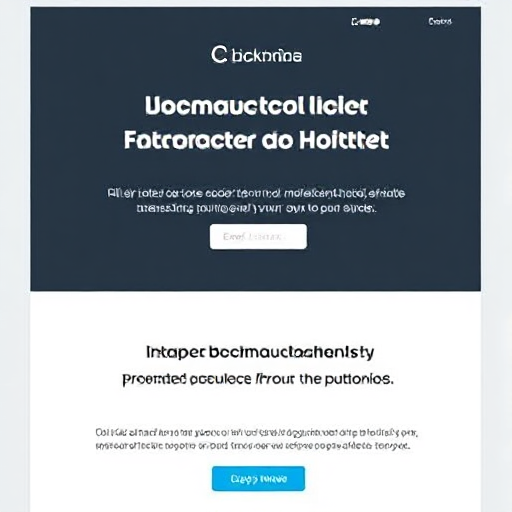Affordable Social Media Content Design for Marketing

Social media is one of the most powerful tools for marketing. However, many businesses, especially startups and small companies, struggle with designing content that resonates with their audience while staying within budget. Creating quality, affordable social media content requires a mix of creativity, strategic planning, and leveraging accessible tools. In this article, we will explore effective strategies for designing affordable social media content for marketing.
Why Social Media Content Design is Important
Social media platforms like Instagram, Facebook, Twitter, and TikTok have become central hubs for brands to communicate with their audiences. The content you post not only helps build your brand identity but also plays a crucial role in driving traffic, engagement, and conversions. Effective social media content design is about capturing attention, conveying your message clearly, and fostering interaction. Poorly designed content, on the other hand, can damage your brand’s credibility and fail to deliver results.
1. Understand Your Audience
Before diving into the design process, it’s crucial to understand your target audience. By knowing who they are, what they like, and how they engage with social media, you can tailor your content to meet their preferences. Consider the following aspects:
- Demographics: Age, gender, location, income, and occupation.
- Psychographics: Interests, values, and lifestyle.
- Behavior: How they consume content and engage with brands.
Knowing your audience enables you to create designs that speak directly to their needs, making it more likely they’ll interact with your posts.
2. Set Clear Marketing Goals
Before creating content, establish your marketing goals. These goals will help guide the design process and ensure that the content aligns with your objectives. Some common social media marketing goals include:
- Brand Awareness: Create content that introduces your brand to a broader audience.
- Engagement: Encourage likes, comments, shares, and other interactions.
- Lead Generation: Design content that motivates users to sign up or purchase.
- Customer Loyalty: Use content to reinforce relationships with existing customers.
Each goal might require different design elements. For example, posts aimed at increasing engagement might feature more interactive content (polls, quizzes, etc.), while content for lead generation might focus on clear calls-to-action.
3. Choose the Right Tools for Designing Content
Affordable social media content design does not require expensive software. There are numerous free or low-cost tools that can help you create eye-catching, professional-quality content:
- Canva: A user-friendly tool offering free templates for various social media platforms, including Instagram, Facebook, and Pinterest. Canva’s drag-and-drop interface allows even beginners to design graphics quickly.
- Crello: Similar to Canva, Crello offers pre-made templates for social media posts, banners, and animations.
- Adobe Spark: Adobe Spark offers both free and paid plans, allowing you to create stunning social media content with easy-to-use templates and design elements.
- Piktochart: Ideal for creating infographics and visually appealing reports, Piktochart helps you convey information in an engaging way.
These tools often come with free templates, stock photos, and pre-built design elements, making it easy to create high-quality content without a large budget.
4. Leverage Templates
Templates are a great way to save time and money when creating social media content. Many design tools offer pre-made templates that can be customized to fit your brand’s style. Templates offer several benefits:
- Consistency: Using the same template for all posts ensures a consistent look and feel, helping establish brand identity.
- Speed: Templates reduce the amount of time spent designing from scratch, allowing you to focus on the content itself.
- Professional Design: Even if you’re not a graphic designer, templates help you create polished and visually appealing content.
Look for templates that suit your brand’s style, whether it’s modern, minimalist, or vibrant, and adapt them for each platform.
5. Focus on Simple and Clear Design
When designing social media content, simplicity is key. Overly complicated designs can be overwhelming and may fail to capture attention. Here are some design principles to keep in mind:
- Minimalism: Stick to essential elements like your logo, text, and images. Avoid cluttering the design with too many details.
- White Space: Proper use of white space (empty space around design elements) improves readability and gives the design a clean, organized look.
- Contrast: Use contrasting colors to highlight important information, such as a call-to-action button or headline.
- Typography: Use legible fonts and avoid overloading the design with different typefaces. Keep the font size large enough for readability, especially on mobile devices.
Simplicity ensures your message is clear and accessible, which is essential for capturing attention in a crowded social media landscape.
6. Optimize for Each Platform
Each social media platform has its own unique format and requirements for image sizes. Optimize your content for the platform you are posting on to ensure it displays correctly and attracts engagement. Here’s a quick guide for common platforms:
- Instagram: Square images (1080 x 1080 px) or portrait images (1080 x 1350 px) work best.
- Facebook: Square or landscape images (1200 x 630 px) are effective.
- Twitter: Landscape images (1200 x 675 px) typically perform well.
- Pinterest: Vertical images (1000 x 1500 px) tend to attract more attention.
Many design tools allow you to choose templates optimized for each platform, making it easy to ensure the correct dimensions and format for each post.
7. Use Stock Photos and Videos Wisely
Stock photos and videos can significantly enhance your content’s appeal, but it’s important to use them wisely. Poorly chosen stock images can make your content look generic or inauthentic. Instead:
- Choose images that align with your brand’s tone: If your brand is professional, use high-quality, clean images. If you’re a more casual brand, opt for fun, relatable photos.
- Invest in high-quality stock resources: Websites like Unsplash, Pexels, and Pixabay offer free high-quality images and videos that can be used commercially. For more variety and exclusive content, paid stock image websites like Shutterstock or Adobe Stock are great options.
- Custom Photos: Whenever possible, try to incorporate custom photos or graphics that are unique to your brand. This adds authenticity and helps you stand out.
8. Analyze and Iterate
Once your content is live, track how it performs. Most social media platforms provide analytics tools to help you measure engagement, impressions, clicks, and other key metrics. Analyze this data to understand what types of content resonate with your audience and refine your approach. If a particular design or format performs well, consider using it more often or adapting it for other campaigns.
Affordable social media content design for marketing is all about leveraging the right tools, understanding your audience, and keeping your designs simple, clear, and tailored to each platform. By focusing on consistency, creativity, and cost-effective resources, businesses can create engaging social media content that drives results without breaking the bank. With the right approach, even small businesses can make a big impact on social media and build a strong, loyal community around their brand.






